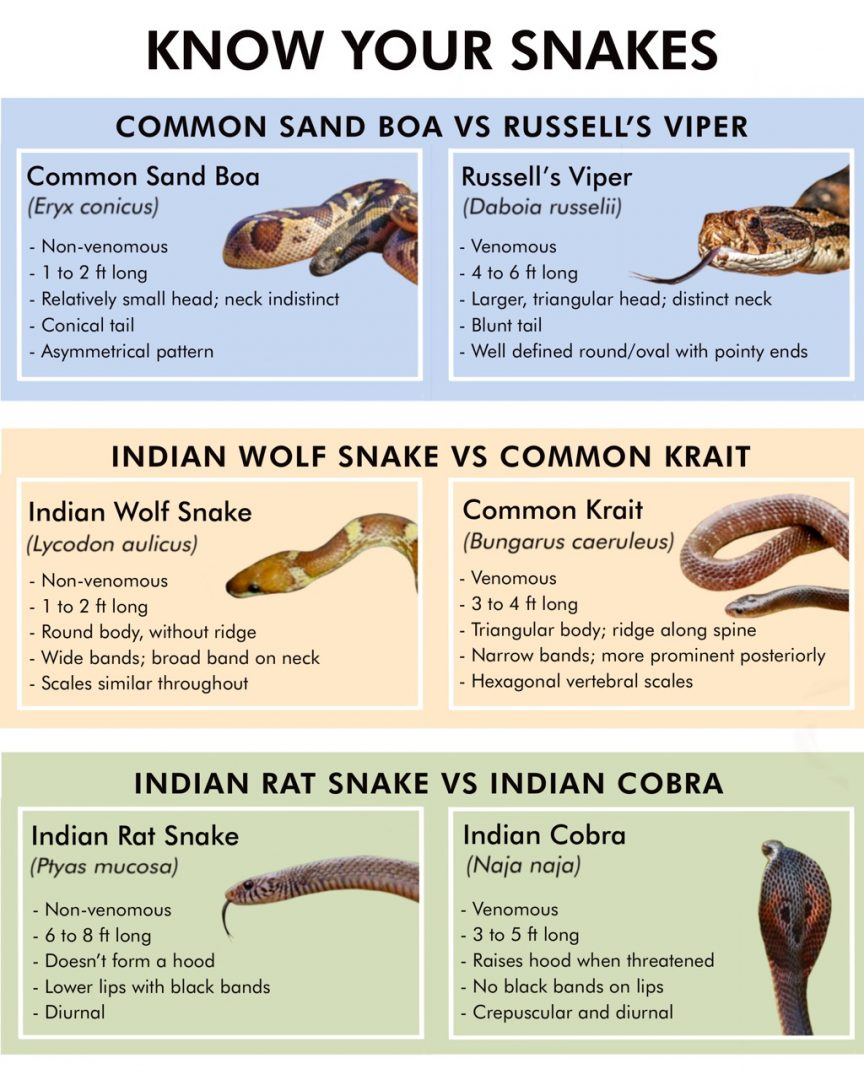Important Facts For Prelims
Use of Snake Venom for Intoxication
- 21 Mar 2024
- 6 min read
Why in News?
Recently, a few people have been arrested by the police on charges of allegedly providing snake venom for a rave party under the Wild Life (Protection) Act, 1972, and the Indian Penal Code (Bharatiya Nyay Sanhita, 2023).
What are Key Facts About Snake Venom and its Use?
- About:
- Out of nearly 3400 snake species globally, India hosts around 300 snake species inhabiting varying habitats across the country.
- Types of Snake: The species falls under 4 families namely - Colubridae, Elapidae, Hydrophiidae, and Viperidae.
- Venomous Snake: Out of 300 species found in India, more than 60 are venomous, 40+ mildly venomous, and about 180 non-venomous.
- Snake venoms (highly toxic saliva) are the secretions of venomous snakes, which are synthesised and stored in special glands.
- Properties of Venom: Snake venom is a complex mixture of enzymes, peptides and proteins of low molecular mass with specific chemical and biological activities.
- Snake venom contains several neurotoxic, cardiotoxic, and cytotoxic nerve growth factors, lectins, disintegrins, haemorrhaging and many other different enzymes.
- Use of Snake Venom:
- Certain particular snake species like cobras, kraits and Black mambas are used for medicinal and intoxication purposes.
- Medicinal use:
- The use of snake venom in different pathophysiological conditions has been mentioned in Ayurveda, homoeopathy and folk medicine.
- It is also used for the treatment of thrombosis, arthritis, cancer and many other diseases.
- One of the most well-known examples is the use of snake venom in antivenom production.
- Recreation Use:
- Snake venom is often used as a recreational drug, despite less scientific research. Its smuggling is a multi-million dollar illicit industry.
- Various forms of neurotoxin found in cobra venom, particularly, bind on nicotinic acetylcholine receptors (nAChRs) that are widely distributed in the human brain area and are involved in the euphoric or rewarding experience.
- People also experience “muscular paralysis and analgesia” (loss of the ability to feel pain while still conscious), and drowsiness.
- Regulation:
- The use and trade of most psychoactive ‘substances of abuse’ come under the Narcotic Drugs and Psychotropic Substances (NDPS) Act, but not snake venom.
- The NDPS Act, 1985, prohibits a person from producing, possessing, selling, purchasing, transporting, storing, and/or consuming any narcotic drug or psychotropic substances.
- The matters related to snakes and their venom come under the purview of the Wildlife Protection Act.
- Section 120A (criminal conspiracy) of the IPC also covers crimes related to snake venom for recreational use.
- The use and trade of most psychoactive ‘substances of abuse’ come under the Narcotic Drugs and Psychotropic Substances (NDPS) Act, but not snake venom.
Note:
- Intoxicate substances act on the central nervous system and alter an individual’s mood, perception and consciousness.
- Depending on the nature of psychoactive substances, they produce either modest type of psychological effects such as euphoria, anxiolysis, dissociation, emotional blunting, etc. or more unusual effects such as hallucination, synaesthesia, altered space-time continuum, and mystical experience.
- Some of the most commonly used hallucinogens include mushrooms, cannabis, mescaline, lysergic acid diethylamide (LSD), dimethyltryptamine (DMT) and methylenedioxymethamphetamine (MDMA).
- Some of the commonly used psychoactive fauna are hallucinogenic fish such as clownfish and Rabbitfish, amphibians such as toads, ants such as Red Harvester Ants, reptiles such as the Indian Wall Lizard, and liver and bone marrow of giraffe.
Read more: Snakebite Envenoming
UPSC Civil Services Examination, Previous Year Question (PYQ)
Prelims:
Q 1. Consider the following statements: (2019)
- Some species of turtles are herbivores.
- Some species of fish are herbivores.
- Some species of marine mammals are herbivores.
- Some species of snakes are viviparous.
Which of the statements given above are correct?
(a) 1 and 3 only
(b) 2, 3, and 4 only
(c) 2 and 4 only
(d) 1, 2, 3 and 4
Ans: (d)
Q 2. King Cobra is the only snake that makes its own nest. Why does it make its nest? (2010)
(a) It is a snake-eater and the nest helps attract other snakes
(b) It is a viviparous snake and needs a nest to give birth to its offspring
(c) It is an oviparous snake and lays its eggs in the nest and guards the nest until they are hatched
(d) It is a large, cold-blooded animal and needs a nest to hibernate in the cold season
Ans: (c )
Q 3. For which one of the following snakes is the diet mainly composed of other snakes? (2008)
(a) Krait
(b) Russell’s viper
(c) Rattlesnake
(d) King Cobra
Ans: (d)
Mains:
Q. Can overuse and free availability of antibiotics without Doctor’s prescription, be contributors to the emergence of drug-resistant diseases in India? What are the available mechanisms for monitoring and control? Critically discuss the various issues involved. (2014)







